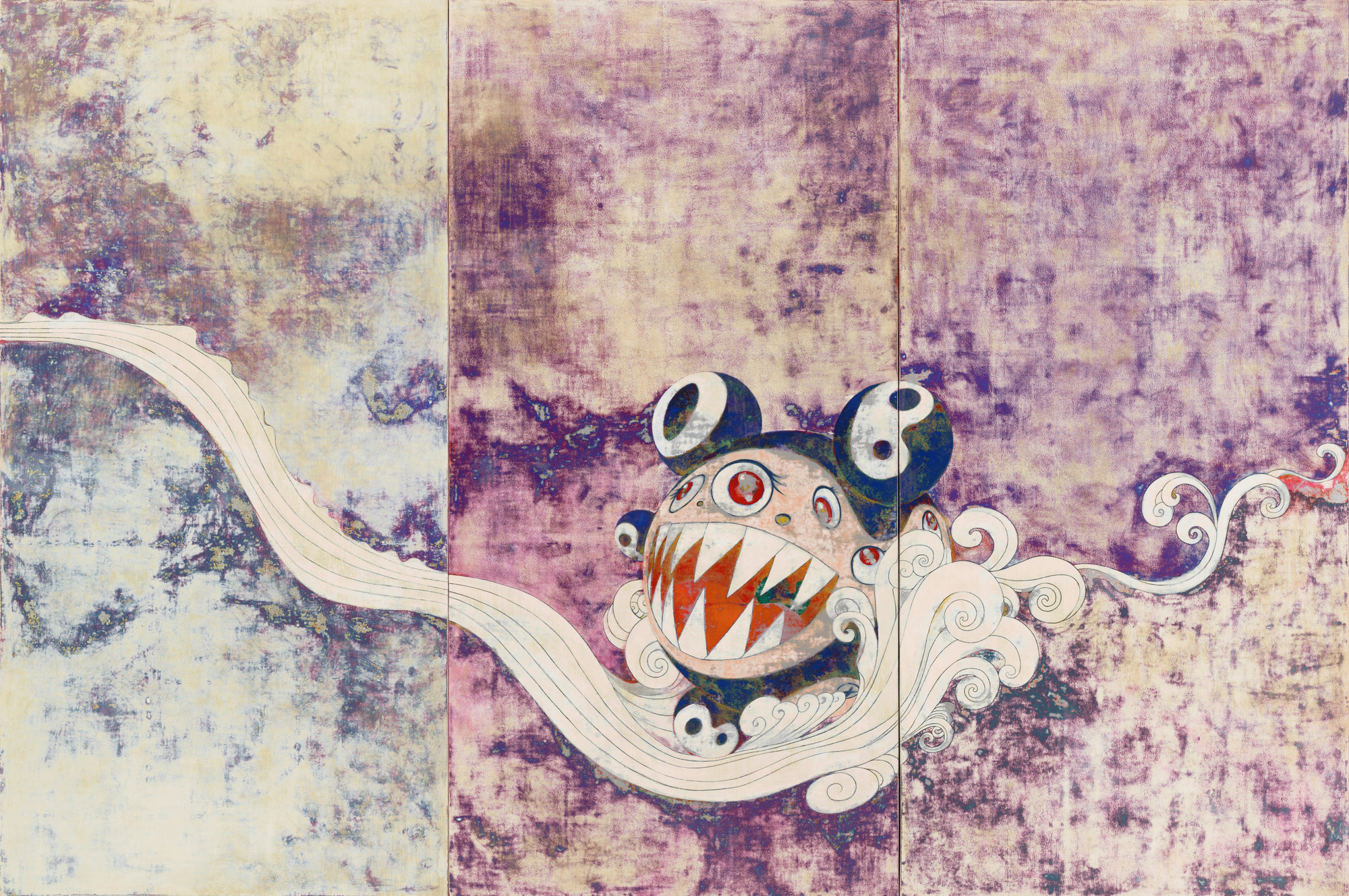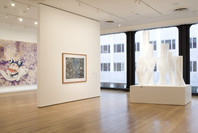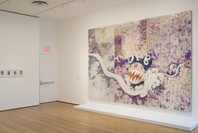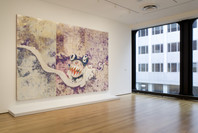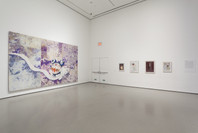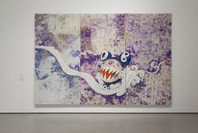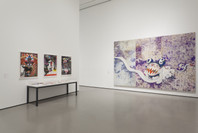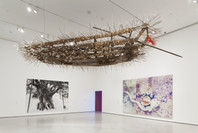A stylized wave crashes across the three panels of Murakami’s 727, each of which features a mottled purple-blue background. In the center of the composition, a curious creature surfs the spray, its red eyes shining and spiky teeth revealed in a daring expression of glee. The figure’s rotund form is framed by ear-like orbs emblazoned with the letters of its name: DOB. Created by Murakami in 1993, Mr. DOB was among the first in a pantheon of characters inspired by the culture of anime (cartoons) and manga (comics) that emerged in Japan’s postwar era and became wildly popular in the 1980s.
Mr. DOB functions as an endlessly morphing alter ego of sorts for the artist, appearing in every facet of his production—in or on paintings, sculptures, key chains, and plush toys—reinforcing with each repetition the character’s iconic status. In this painting, a ferociously cute DOB is subsumed in a dappled expanse—produced by building up and sanding down some twenty layers of acrylic paint—which recalls nihonga painting, the traditional style in which the artist was trained. Through this conflation of historical and contemporary forms, as well as an insistent two-dimensionality, 727 anticipates Murakami’s Superflat theory of 2000, in which past and present, fine art and pop consumerism are collapsed into a single entity, a plane, the artist has explained, “not bound by limits, not connected to the system, not filled with information. It is a blank slate.”
Publication excerpt from MoMA Highlights: 375 Works from The Museum of Modern Art, New York (New York: The Museum of Modern Art, 2019)
Mr. DOB, the whimsical, sharp-toothed character riding the wave at center, is Murakami's first signature creation inspired by the anime (animated film) and manga (comic book) characters that have achieved cult status in Japanese youth culture. His name is a contraction of the Japanese slang expression "dobojite," or "why?" and it is literally spelled out in his facial features and appendages, ensuring we recognize him in spite of his ever-changing appearance. Here Mr. DOB is borne on a tide of traditional Japanese forms. The wave, spanning the length of three panels that evoke a painted folding screen, is strongly suggestive of the well-known woodblock prints of the Japanese artist Hokusai (1760–1849). About twenty layers of paint, resembling lacquer, were built
up then scraped away to create a variegated abstract background in Nihonga style, a fusion of Japanese and Western artistic approaches that developed in the late nineteenth century. Of 727 Murakami has said, "The work is not particularly representative of anything. It is simply a combination of all the available techniques that I had at the time."
With studios and teams of assistants in Tokyo and New York producing his paintings, sculptures, environmental installations, prints, multiples, drawings, media works, and popular merchandise, Murakami has drawn comparisons with Andy Warhol. His expert melding of the popular with the time-honored has resulted in this humorous and celebratory representation of the past, present, and future of Japanese art.
Publication excerpt from The Museum of Modern Art, MoMA Highlights since 1980, New York: The Museum of Modern Art, 2007, p. 155.
